|
It happens to a lot of us. One day you’re getting ready for the day and your favorite pair of jeans no longer fits. Or, you start to notice that you’re easily winded doing activities that used to be effortless. So what do you do? Do you try the latest fad diet, start to exercise regularly, or just give up? Well hopefully you don’t do the last one, but even if you have, we’re here to give you some tips and encouragement to meet your health goals in the New Year!
So you’ve decided that this is the year you want to start practicing a healthier lifestyle, now what? The first hurdle is simply figuring out what your goals are. Do you just want to lose weight? Do you want to gain muscle mass? Do you just want to fit into that favorite pair of jeans? When thinking about your goals, try to make them SMART. SMART goals are a very specific type of goal that are useful for a lot of different tasks including weight loss. Check out the video below to learn more about these specific goals! 
If you need some help setting your SMART goals, check out this helpful worksheet to get you started! Once you've figured out your goals, writing them down and putting them somewhere that you will often see them. Maybe set a reminder on your cell phone or place them on your fridge or pantry door. Seeing your goals every time you reach for a snack might help you be more mindful about your choices and help you achieve those goals! After you've set your goals, it's a good idea to get a clear idea of where you're starting from. Here are some things that you can think about doing to help you track your fitness journey and measure your progress. 1. Take some "before" photos when you start your new healthy lifestyle plan. Use these photos as motivation to get yourself in better shape. You can also use these to compare once you've reached your goals. 2. Weigh yourself. It's good to know where you're starting from so you can track your progress. There are also lots of apps that will help you track your weight. Check some outhere! 3. Create a schedule. Put it in your phone's calendar and set reminders for yourself. 4. Find an exercise that you enjoy. You're much more likely to stick to your exercise regimen if you are having fun! Here's a great list of some activities that you might not expect! 5. Download the "MyFitnessPal" app. Along with the apps suggested earlier, this app can help you track your exercise and diet! The best part? It's FREE! Check it out here.
So now you've set your goals and done a couple of things to help you track your progress. Good job! If you're deciding to embark on a new fitness plan, there are a lot of free resources to take advantage of! One of these that you might find helpful are free trial periods at your local gyms. A lot of gyms offer these without any sort of long-term commitment. This can be useful as your begin exercising more regularly because it will help you learn the types of amenities (indoor running track, pool, classes, etc.) that you may want to utilize at your gym. However, some of you might not have access to a gym or aren't as comfortable exercising in front of others. Well Youtube has you covered with a never-ending supply of free workouts available for streaming! Some of our favorite channels include Fitness Blender, Bodylastics, and Yoga with Adrienne but if these aren't your style check out this list that has so many more!
We hope this helps you get your plan to live healthier in 2019 off to a good start! Be on the look out for next month's newsletter where we'll talk more specifically about some simple tips to help you remain more active and shed a few pounds in the process!
ICYMI:
AIHREA was featured in KCPT's digital magazine Flatland this month! Check it out here.
The AIHREA year in review... This year, like so many before it, seemed to just fly by for all of us at AIHREA. From a newly designed website to hugely successful events, 2018 was definitely a year to be remembered. Keep reading to recap all of the awesome things we did this year! New Website We kicked off the new year with our sleek, new website with improved readability and functionality. Additionally, we reinvigorated our newsletter by treating it like a blog and providing custom content for all of our followers. If you want to find out about all of the features on our new site click here!  Our Nations' Energies Powwow As usual, May was a busy month for us this year. We kicked off the month with our 12th Annual AIHREA Our Nations' Energies Health and Wellness Powwow. Instead of focusing on our primary care screening clinic, as we have for previous powwows, this year we concentrated on health education with a whole host of new activities for powwow attendees to choose from. Some of these included taking a shot at our heavy bag while learning about the importance of exercise to a healthy lifestyle, trying on some "drunk goggles" to get an idea of how difficult it is to complete simple tasks while under the influence of alcohol, and, among others, finding out just how much fat and sugar are in your favorite coffee drinks. Participants had a great time and we're already busy cooking up new activities for next year. You can see a list of winners from this year's powwow here and more pictures from the event here!  AIHREA Graduates Just a couple of weeks after our powwow, we were happy to announce that we had three graduates this year! We love to see our staff members successfully pursuing further education and this year we had graduates to be especially proud of. Oliver Doerr graduated with his Bachelor of Health Science with a minor in Public Health from the University of Missouri - Kansas City. Ryan Goeckner graduated with his Master of Arts in Religious Studies from the University of Kansas. For his thesis research he focused on the importance of Lakota oral and religious traditions to the No Dakota Access Pipeline movement and was the 2018 recipient of the Department of Religious Studies Lewis Ethics Essay Award. Jordyn Gunville also graduated with her Master of Public Health from the University of Kansas Medical Center. For her capstone, she focused on maternal child health and was the 2018 recipient of the Analee E. “Betsy” Beisecker Public Health Excellence Student Award. To learn more about our graduates, click here! Congratulations and good luck, grads!  Summer Interns During the months of June and July we were happy to host nearly a dozen interns between the Center for American Indian Community Health and Center for American Indian Studies. This year we hosted interns from two high schools and seven colleges and universities. Interns spent the summer engaging with local Native communities and learning about and being involved with various research projects at both organizations. To learn more about each of our interns, click here! AIHREA would like to wish you all the best of luck in your future endeavors!  3rd Annual Art and Culture Extravaganza AIHREA team members spent a good deal of time planning this fall for our 3rd Annual American Indian Art and Culture Extravaganza at Johnson County Community College. This hard work really paid off. This event was a huge success with the largest turnout we've ever seen in its history. Our silent auction items netted nearly $1000 in profits to go directly to our scholarship initiatives for Native students! We had over 100 attendees for our afternoon dance demonstration and over 70 at our evening performance. Our newly introduced arts and crafts workshops were well attended as well. Members of the public had a great time learning about American Indian cultures and getting to take home something in the process. Hopefully next year will be even bigger! As you can see, 2018 was an eventful year for the AIHREA team. We hope that if you attended any of our events this year that you enjoyed yourself and maybe learned a little something at the same time. We'll see you in 2019! The American Indian Health Research and Education Alliance would like to invite you to attend the 3rd Annual American Indian Art & Culture Extravaganza to be held this Saturday, November 10, from 11am to 9pm at the Regnier Center at Johnson County Community College in Overland Park, KS! Join us for a day packed with events for the whole family!
For more information about the Art & Culture Extravaganza, visit our Facebook book event page!
Netflix currently has right around 125 million subscribers, so odds are you might be one of them (or you’re likely “borrowing” a login from a friend or family member #nojudgements). With more movies and television shows available to subscribers almost every day, you might be spending more time trying to find something to watch, rather than actually watching anything. This month AIHREA would like to help you out by sharing our top six favorite indigenous produced/directed/focused films on Netflix!
Awake: A Dream from Standing Rock
Directors: Josh Fox, Myron Dewey (Newe-Numah/Paiute-Shoshone), James Spione
Released: 2017 Many of you are probably familiar with or maybe even participated in the resistance against the construction of the Dakota Access Pipeline. Chronicling the struggle of indigenous peoples and their allies in this fight, Josh Fox, James Spione, and Myron Dewey (Newe-Numah/Paiute-Shoshone) bring the viewer into the heart of the resistance camps and frontline actions to highlight the story of this movement through Native eyes.
Rhymes for Young Ghouls
Director: Jeff Barnaby (Mik’maq)
Released: 2014 Set in 1976 on the Red Crow Mik’Maq reserve, Jeff Barnaby’s film follows the story of Aila, a 15 year old who takes to dealing drugs to pay her “truancy tax” and avoid being taken to the local residential school. Part thriller, part drama this film highlights the struggles of life on a Canadian First Nations reserve in the 1970s through Aila’s (Devery Jacobs – Mohawk) struggles with her family and community.
Keepers of the Game
Director: Judd Ehrlich
Released: 2016 It’s fairly common knowledge that the contemporary game of lacrosse was developed out of indigenous stickball games throughout the Eastern United States. Due to this, the game of lacrosse has become popular in many American Indian and First Nations communities. This film follows the struggle for acceptance of the girls’ lacrosse team from Akwesasne Mohawk Territory. Faced with resistance from community members over whether or not it is traditional for women to play the game and racism from outside communities, the girls set off on a historic run for the championship.
The Daughter of Dawn
Director: Norbert A. Myles
Released: 1920 One of the first films to feature a completely American Indian cast, this silent film features over 300 Comanche and Kiowa individuals, including two children of Quanah Parker. Additionally, cast members provided their own clothing and other items to be included in the film. Although it’s widely available today (including on Youtube), it was only screened in three locations including Kansas City!
Thor: Ragnarok
Director: Taika Waititi (Māori)
Released: 2017 For those who are unfamiliar, this movie might seem a little out of place on this list. Part of the massively successful Marvel Universe films, Thor: Ragnarok earns its spot because of its director Taika Waititi (Māori). Famous for his film Boy (2010) and his short film Two Cars, One Night (2004) among others, Ragnarok is just one of Waititi’s recent films available to stream online. For those of you with an Amazon Prime membership, check out What We Do in the Shadows (2015) and Boy (2010)!
Deidra and Laney Rob a Train
Director: Sydney Freeland (Navajo)
Released: 2017 Sydney Freeland’s (Navajo) Netflix original follows the story of two teenage sisters who take to robbing trains to support themselves after their mother is sent to jail. After the release and acclaim of her first two projects, the short Hoverboard (2012) and film Drunktown’s Finest (2014), this project, which debuted at the Sundance film festival, is her first widely released film. https://www.youtube.com/watch?v=Gi6wDhqg9_w Join us on November 10th for our 3rd Annual American Indian Art & Culture Extravaganza!
Visit our Facebook page for more information!
 1. Pawpaw range in the United States. 1. Pawpaw range in the United States. Flavors of coconuts, mango, and banana probably make you think of tropical locales like the Hawaiian and Caribbean islands. Depending on where you live in North America, you might be surprised to learn that these flavors can all be found in one wild edible; the paw paw. Serving as a food source for Native peoples for centuries, paw paws are the largest wild tree fruit in North America. So for this month, Asiminikisathwa (pawpaw moon in Shawnee) we're focusing on this unique wild North American fruit and how you can forage for it yourself! Paw paws (Asimina triloba) have long been used by Native North Americans for food. Paw paws (or custard apple, Indian banana, Ozark banana, and many others). If you live in the eastern half of the United States, it’s highly likely that paw paws grow in your area. Their range reaches from the Atlantic Ocean in the east to the eastern portion of Kansas in the west and from the Great Lakes region in the north to the Gulf of Mexico in the south. There are 26 known varieties that have been cultivated domestically along with those that exist in the wild. Despite this diversity, there are some characteristics that can help you identify these plants. They can frequently be found near waterways like creeks and streams. As part of the Annonaceae family, that also includes other tropical fruits like soursop, paw paws are a tropical looking plant with broad obviate (widest just below the tip) leaves that are smooth on the edges. They resemble those of a hickory tree (another wild edible) except paw paw leaves alternate instead of being opposite one another. If you are in doubt break off a leaf and smell it. Paw paw leaves smell slightly of green pepper.  Pawpaw fruits that are just getting ready to ripen. Pawpaw fruits that are just getting ready to ripen. Paw paw fruits ripen around the beginning of September, but that doesn’t mean you can’t go find yourself a grove of them around July to start monitoring their progress. You can check their ripeness in the same way you check avocados. When they are ripe the flesh of the fruit will soften. Additionally, the skin will start to bruise much like a banana when it is ready for eating. The skin and seeds are inedible; however you can save the paw paw seeds for cultivation later (although they take about seven years to fruit)! Keep the seeds moist in a plastic bag with a small amount of soil and place in the refrigerator for three months. This process, called moist stratification, simulates the overwintering a seed would undergo in the wild. After stratification, you can plant the seeds. They may take a few months to sprout, so don’t give up on them! Part of the reason they haven’t taken off as marketable fruit is because they don’t travel well and have a short shelf life, so make sure you use them soon after picking! You can enjoy them raw or in baked goods. There are many recipes for everything from puddings to bread online. Not only are paw paws tasty, but they also have many nutritional benefits as well! A single paw paw has approximately 80 calories, 18.8g of carbohydrates, 2.6g of fiber, 1.2g of fat, and 1.2g of protein. Each fruit contains as much Vitamin A and twice the Vitamin C as banana. While bananas have more potassium, paw paws still contain 345mg. They top the charts over all other fruits in Calcium (63mg), Phosphorus (47mg), Magnesium (113mg), Iron (7mg), Zinc (.9mg), Copper (.5mg), and Manganese (2.6mg). References: www.pawpaw.kysu.edu/pawpaw/cooking.htm Photo credits: 1. By Elbert L. Little, Jr., of the U.S. Department of Agriculture, Forest Service, and others - USGS Geosciences and Environmental Change Science Center: Digital Representations of Tree Species Range Maps from "Atlas of United States Trees" by Elbert L. Little, Jr. (and other publications), Public Domain, https://commons.wikimedia.org/w/index.php?curid=29451138 Summer is winding down (even if the weather doesn't feel like it), you're checking everything off your school supply lists, and you (or the kids) are headed off to a new term of classes! Before we know it, we'll be reaching for winter coats and preparing for the holiday season. If you follow AIHREA's social media pages you might have noticed that during the month of August we've been focusing on our indigenous neighbors to the south, in Central and Southern America (if you aren't following us on social media, click the icons under our logo at the top of the page to make sure you never miss an update!). We'll be continuing that trend with our newsletter this month with a special piece from summer intern Fatima Rahman about her time in Ecuador! Otavalo Indígenas of Ecuador  On a crisp Saturday morning in May 2016, AIHREA intern and University of Kansas Medical Center Masters of Public Health graduate Fatima Rahman was immediately fascinated by the flourishing market and music of Otavalo, Ecuador. While spending her mornings filling vials for blood tests and learning about all the different types of stomach bugs affecting socioeconomically disadvantaged Ecuadorians during her time volunteering with a non-profit medical clinic in Quito, Ecuador, she spent her afternoons and weekends hunting down gems in Ecuadorian culture like the market in Otavalo. Located in a lush valley of the Andean mountains in northern Ecuador, Otavalo is home to more than 45,000 Otavalo indígenas – one of the most thriving indigenous groups in Latin America. Otavalo indígenas, famous for weaving, agriculture and music, are a talented group of Andean natives with a knack for business that dates to as far as pre-Incan times in the 15th century. Researchers interested in Otavalo indígenas agree that the inherent resilience in this native community, despite brutal colonialism and westernization, has much to do with them maintaining a strong cultural presence through music and dress code while participating in the modern business market of Ecuador and globally (Meisch, 2013). The skill of Otavalo indígenas in textile, weaving, and manufacturing survived through Inca society and colonialism, into the modern 21st century. In pre-Inca society, Otavalos (then a part of the pre-Colombian Cara culture) catered their businesses to traveling merchants. In the 16th century, pre-Inca Otavalos were forcibly assimilated into the Inca civilization. Following assimilation, and later colonialism, they were victims of forced labor in textile sweatshops for mass production and exploited for their talent. Today, however, Otavalo indígenas have more space to create and market their textiles in the crowded Otavalo markets every Saturday morning, and in smaller markets in and around Quito, the capital of Ecuador. The success of Otavalo in Ecuadorian society, despite historical discrimination, oppression and poverty, is partially attributed to efforts by the Ecuadorian government to ban discrimination and protect the rights of indigenous in the country. For example, after pressure from the Indigenous Nationality Confederation of Ecuador (CONAIE), the government of Ecuador recognized indigenous and Afro-Ecuadorian nationalities in their constitution in 1998 – paving the way for acceptance and increased diversity in Ecuadorian communities (Becker, 2011). While shopping the Otavalo market, she experienced the same euphoria she felt when shopping in her own ancestral home of Bangladesh. Walking into the shops, she was pleasantly startled by the brightly colored blankets, hammocks, and handbags among other goods. Personalized journals carved out of musky leather and alpaca-wool sweaters were the hit of the market. She bargained her way through the market with her limited Spanish before hitting the local bakeries for fresh Yuca bread. At one point, she was both exhausted and impressed from bargaining with an Otavalo young woman for a cotton shawl. Otavalo indígenas are critical parts of the Ecuadorian market economy and its presence in the global economy. Her experience illustrated very clearly that, over the centuries, Otavalo indígenas have turned what was once a regional trade market, into a global enterprise; for some, the enterprise became a unique opportunity to improve their own socioeconomic statuses. Besides the impressive apparel and accessories, Otovalo indígenas are also famous for their music, which has reached nearly every country around the world. Imbabura Valley in Otavalo is a musical center for Ecuador, famous for conjunto music in both Quechua (a native language of Ecuador) and Spanish (Titon, 2015). In the early nineties, Otavalos made a booming entrance to the global music industry by taking up the streets of Amsterdam, Istanbul, and New York with native Andean music. Andean music played by Otavalo consists of a distinct panpipe that permeates the music scene for a truly unique twist. Immigrant Otavalo wooed Europeans and Americans with the panpipe, and to this day the panpipe is still the star of the show in the markets of Otavalo. Finishing her Saturday afternoon in Otavalo with cool shrimp ceviche, she felt satisfied with her personal discovery of such a beautiful gem in the heart of Ecuador. References Becker, M. (2011). Correa, indigenous movements, and the writing of a new constitution in Ecuador. Latin American Perspectives, 38(1), 47-62. Meisch, L. A. (2013). Andean entrepreneurs: Otavalo merchants and musicians in the global arena: University of Texas Press. Titon, J. T. (2015). Worlds of Music: An Introduction to the Music of the World s Peoples: Nelson Education. ICYMI: Protecting the sacred - Chaco Canyon, a cultural landscape. Click here for details... Survey: People think Native Americans don't exist/aren't discriminated against. Click here for details... Ex-MMA fighter Sharice Davids could become the first lesbian Native American congresswoman. Click here for details... Join Us In Welcoming the 2018 AIHREA Summer Interns! Jessica Blasio recently graduated from Johnson County Community College earning her Associates in Liberal Arts. She will continue her education at the University of Kansas in the fall of 2018 majoring in anthropology. She would like to ultimately work with the indigenous populations of Mexico assisting in the preservation of their customs. She hopes to one day provide a greater appreciation, and understanding, of these indigenous cultures to the outer populations of Mexico. Jessica is a Kansas city local who grew up with three older sisters and her amazing mother. Throughout her childhood, her mother gracefully demonstrated integrity, hard-work, and gratitude, which greatly inspired her to be relentless in her own ambitions. She has always been very curious in her intellectual pursuits and has a great affinity for the arts. She enjoys illustrating, writing, and reading, as well as enjoying a variety of music. She loves outdoor activities such as hikes, walks, biking trails, and picnics. She also never misses an opportunity to travel. In the future, she sees herself as a professor encouraging other like minded students into the pursuit of a more wholesome, active, and educated human experience.  Rain Charger is currently a Master's student at the University of Kansas in the Indigenous Studies program. He am a member of the Itazipacola band of the Cheyenne River Sioux Tribe and is from Eagle Butte, South Dakota. His areas of study focus on social and critical theory and its relationship with Native life, film and media portrayal, music and digital humanities. Additionally, he focuses on helping to ensure the media conversation surrounding Indian Country is productive towards self-determination and positive growth. Considering that we are in a post-Standing Rock world, the dialogue that Indigenous peoples have with media and on the world stage is crucial to healing from colonization. Working at AIHREA allows him to approach this conversation from a preventative medicine angle and illustrates the health needs that are present in Native communities. Additionally, all these insights will help him to grow as a scholar and worker in Indigenous communities with a stronger perspective.  Nicholas Clah is an enrolled member of the Navajo Nation. He is a student at Mill Valley High School and will be a junior this fall. In addition to gaining work experience during this internship, he is interested in learning about health disparities in Native communities and how they are being addressed. In his spare time he likes to skateboard and play Xbox with his friends.  Chloe Gunville is Mnicoujou Lakota and was born and raised on the Cheyenne River Sioux Tribe Reservation in White Horse, South Dakota. She will be starting her senior year at Haskell Indian Nations University this fall where, in addition to playing for the women's basketball team, she will graduate with her bachelor’s degree in American Indian and Indigenous Studies in the spring of 2019. She is interested in public policy and the role it plays in health disparities among minority groups, specifically American Indians. She hopes to gain a better understanding of community based participatory research, while also learning how to build meaningful connections with the communities that AIHREA serves. She grew up on the backs of horses and dirt trails. Her family is the most important thing in her life, including her two dogs that keep her life interesting. She is also very passionate about language revitalization, specifically for the Lakota language.  Christina Haswood is Navajo, originally from Inscription House, AZ and her clans are; Tódich'ii'nii, Dibéłzhíní, Naasht'ézhi Tábąąhá, Kinyaa'áanii. She graduated from Arizona State University (ASU) with a Bachelor of Public Health in the spring of 2018. She will be attending the University of Kansas Medical Center this fall as a Master of Public Health student in the Public Health Management Program. Born and raised in Lawrence, Kansas, she previously graduated from Haskell Indian Nations University, with a degree in Community Health in the fall of 2014. She hopes to be an advocate for Native American healthcare by conducting her own research and creating state and federal policies to reduce Native American mortality and morbidity rates. Her recent past research includes suicide in American Indian adolescents in the state of Arizona & Navajo Nation, suicide prevention on the ASU Downtown Campus, and Body Positivity on ASU Downtown Campus. Christina’s other interests include program planning, management, data analysis, evaluations and health policy. Christina plans to work at the national or international level, advocating for American Indians and other indigenous populations and their rights to healthcare and healthy living.  Isaiah Lumpkins is a student at Mill Valley High School, where he will be a senior this fall. He is currently interested in multimedia. During this internship, he hopes to gain work experience and more knowledge on American Indian cultures and peoples.  Tinaya Murphy is an enrolled member of the Navajo Nation from Los Lunas, New Mexico. She decided to get her Bachelor degree in Business Administration and Associate degree in Community Health at Haskell Indian Nations University, where she also played on the Haskell women’s basketball team. She is currently pursuing a Bachelor of Science in Nursing (BSN) to serve as a foundation for a long, meaningful career engaging with her community. She hopes to have the most impact and provide beneficial services to her people on the Navajo Nation reservation. Her hopes are to continue her education after receiving her BSN and get her Master of Public Health at the University of Kansas Medical Center. She is very passionate about promoting and supporting research studies addressing disparities in Native communities. She is excited to explore opportunities as a health care professional during her internship with AIHREA. She would very much like to be engaged with the community and assist in efforts to advocate for disease prevention and health promotion.  Fatima Rahman graduated from the University of Kansas Medical Center with a Master of Public Health (MPH) in May 2018. She is passionate about bringing healthcare to underserved communities in Kansas and globally. She is interested in adolescent health and prevention efforts against risks to adolescent health. She works mainly on writing manuscripts and participating in health fairs with the AIHREA team. She spends her free time writing, reading, and taking care of her seven nieces. Fatima is passionate about working on global health research in her ancestral home, Bangladesh, and other developing countries. In the future she hopes to pursue a PhD in behavioral health interventions, so she can create and implement programs to improve health of vulnerable populations. She also wants to use her education and skills to engage youth to take active roles in public health issues in their own communities.  Andrew Schaff is a rising senior at Miami University in Ohio majoring in Microbiology. While attending Miami University he has had the opportunity to work in a microbiology lab researching infectious diseases and has developed a new passion for public health and specifically epidemiology. After he graduates he plans on pursuing a Master's of Public Health in Epidemiology and hope to find work investigating health issues involving infectious diseases.  Nya Smith is Navajo and Osage. She is a rising senior at Shawnee Mission South High School and plan on taking courses at Johnson County Community College. After high school, she plans on attending college with the goal of becoming a neurosurgeon. She enjoy drawing, painting, and playing softball. She plays during the school year and summer, including on the varsity softball team at her high school. During this internship, she hopes to gain independence, learn about professional communications, new and improved skills, as well as how to apply them.  Julian Wahnee is a citizen of the Comanche Nation of Oklahoma, as well as Navajo and African American. Julian graduated with his Bachelors in Indigenous American Indian Studies, with an emphasis on Social Welfare, at Haskell Indian Nations University, class of 2016. His experience at an all AI/AN school gave him the opportunity to be in the middle of so many different tribal people at one time. Furthermore, this allowed him to witness how strong and resilient Native people are, despite how the government's failings. He graduated with his Master in Social Work with an American Indian Alaskan Native concentration, specializing in Sexual Health and Education from the Brown School of Social Work at Washington University in St. Louis, MO. Since being at the Brown School, Wahnee has been an active member in the American Indian Student Association, as well as serving on the Washington University Contest Pow Wow committee. He has completed his practicum at Better Family Life where annually they serve more then 50,000 unduplicated clients, predominantly within the African American community, serving both the north and east side of St. Louis. After completing his final practicum this summer at The Center for American Indian Community Health at the University of Kansas Medical Center, he plans on focusing on the stigma surrounding conversations about sex, through healing those who have been negatively affected within Indian Country. In case you missed it: The ALSC has renamed the Laura Ingalls Wilder Award, citing Wilder's treatment of American Indians in her books. Click here for details...
Feds may change approach to oil and gas permits to protect Native American cultural sites in Wyoming. Click here for details... Blackfeet Tribe bans drug dealer from reservation. Click here for details... This month we are highlighting our 2018 AIHREA graduates! Congratulations and good luck!  Oliver Doerr: I am a student at the University of Missouri-Kansas City majoring in Health Science and minoring in Public Health. Progressing through my degree and working at CAICH has provided me with the knowledge I need to recognize and address health disparities. While here I have been afforded the opportunity to immerse myself into research and the cultures of American Indian communities. I have helped create intervention materials with CAICH to address chronic illness and seen the impact of these resources. My time here has been a transformational experience in that it has made me aware of an underserved population that ranks high in many health disparities. Immersing myself in learning and interacting with these communities has propelled my interest in serving unrepresented populations. CAICH has taught me valuable information about community-based participatory research and taught me the different steps in the research process. This has been an exciting opportunity to be part of a wonderful team and learn and work under Dr. Daley. This has been beneficial to my career path in Health Science, Public Health, and research. I look forward to continuing to learn more about AI cultures and addressing health disparities in AI communities.  Ryan Goeckner: I am in the Masters of Religious Studies program at the University of Kansas, focusing on American Indian religious traditions. For my thesis research, I am exploring the ways in which academic conversations around the authority and relevance of oral traditions have had tangible impacts in American Indian communities, with a special focus on resistance to the Dakota Access Pipeline by the Cheyenne River Sioux Nation. By examining academic discussions surrounding these traditions and the relevance of these traditions to the No DAPL resistance movement, I argue that voices from the American Indian community are necessary for scholars to adequately understand these traditions. As a part of this research, I conducted a series of interviews with Cheyenne River Sioux Nation citizens to understand these impacts in relationship to the No DAPL movement. At CAICH I serve as the project manager on our American Indian ethnic identity project, Native 24/7. I would like to give special thanks to AIHREA directors Sean and Chris Daley, along with all the members of AIHREA, for their unending support of my research interests and graduate career.  Jordyn Gunville: I am currently a Susan G. Komen Scholar, and will be gradating in May 2018 with my Master of Public Health from the University of Kansas Medical Center. My Masters Research focused on Maternal Child Health. I am member of the Cheyenne River Sioux Tribe, Eagle Butte, SD. Born and raised on CRST, I have gained the first-hand experience understanding health disparities and health barriers American Indians (AI) face. I have worked for AIHREA, either at CAIS or CAICH, since 2011. During my time I have been directly involved with research, working as project manager for the primary health screenings clinic, assisting with tobacco and smokeless tobacco cessation research, mental health, tobacco health literacy, and breast cancer research. I am this year’s recipient of the 2018 Analee E. “Betsy” Beisecker Public Health Excellence Student Award. I will continue to address health disparities through my current training as a student in a certification program at the Bloomberg School of Public Health at Johns Hopkins University and doctoral studies in Health Policy and Management at the University of Kansas Medical Center. I am very proud of my children, JorJa (4), Jarvis (1), and am expecting my third child June of 2018. Thank you to everyone who attended and participated in this year's AIRHEA Our Nations' Energies Powwow! Here's some pictures from the event!
|
Archives
July 2021
Categories
Never miss any of our monthly updates by entering your email below:
|

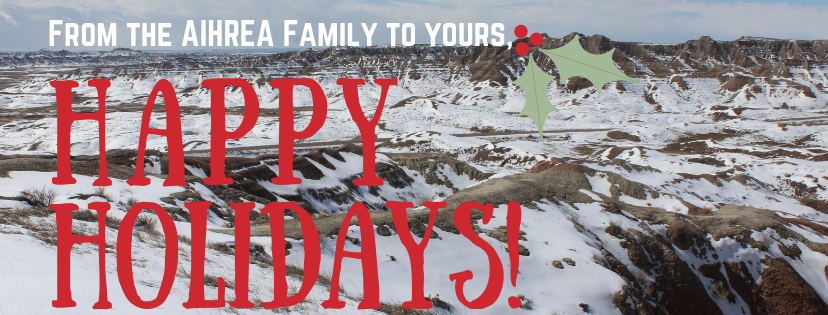

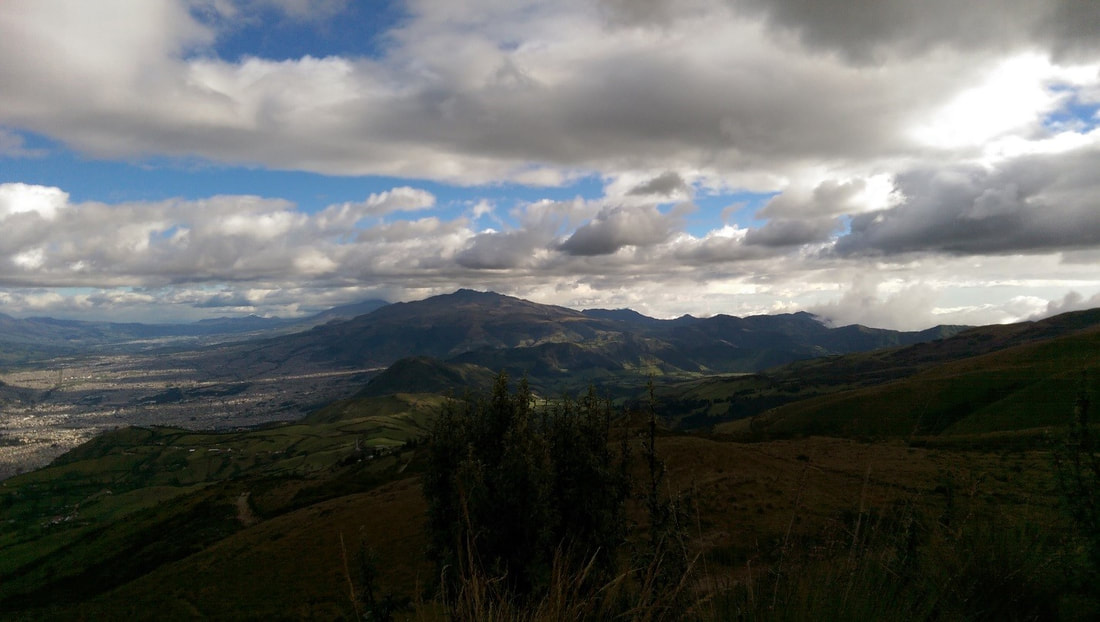


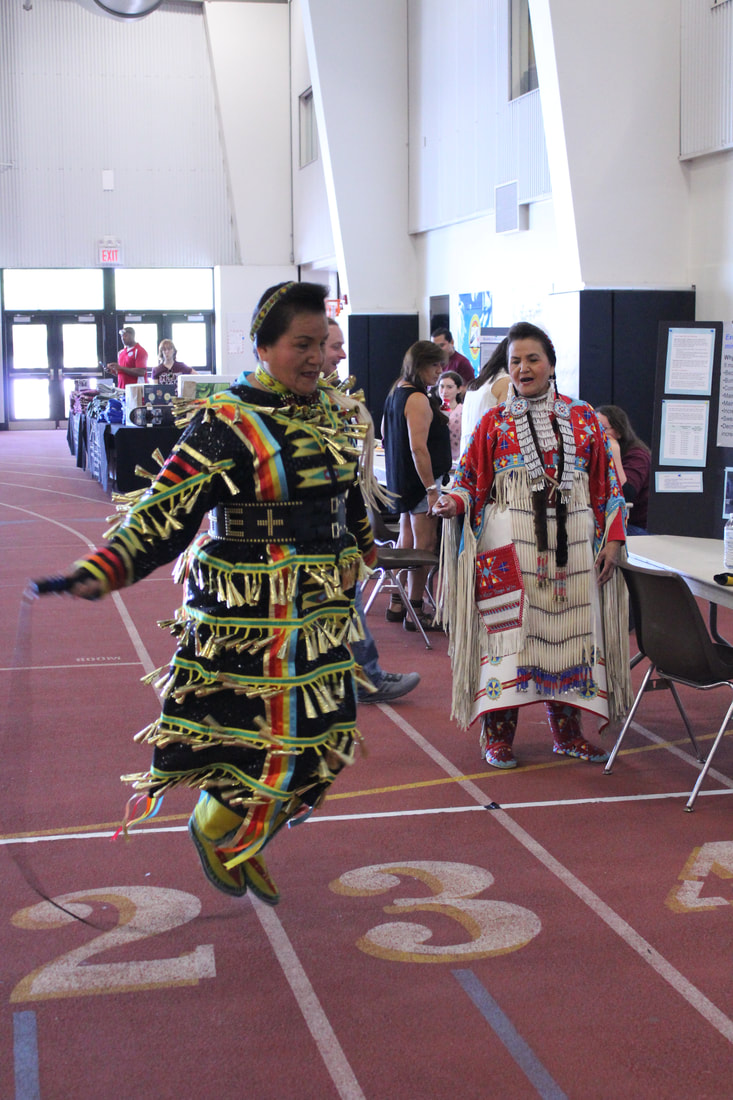
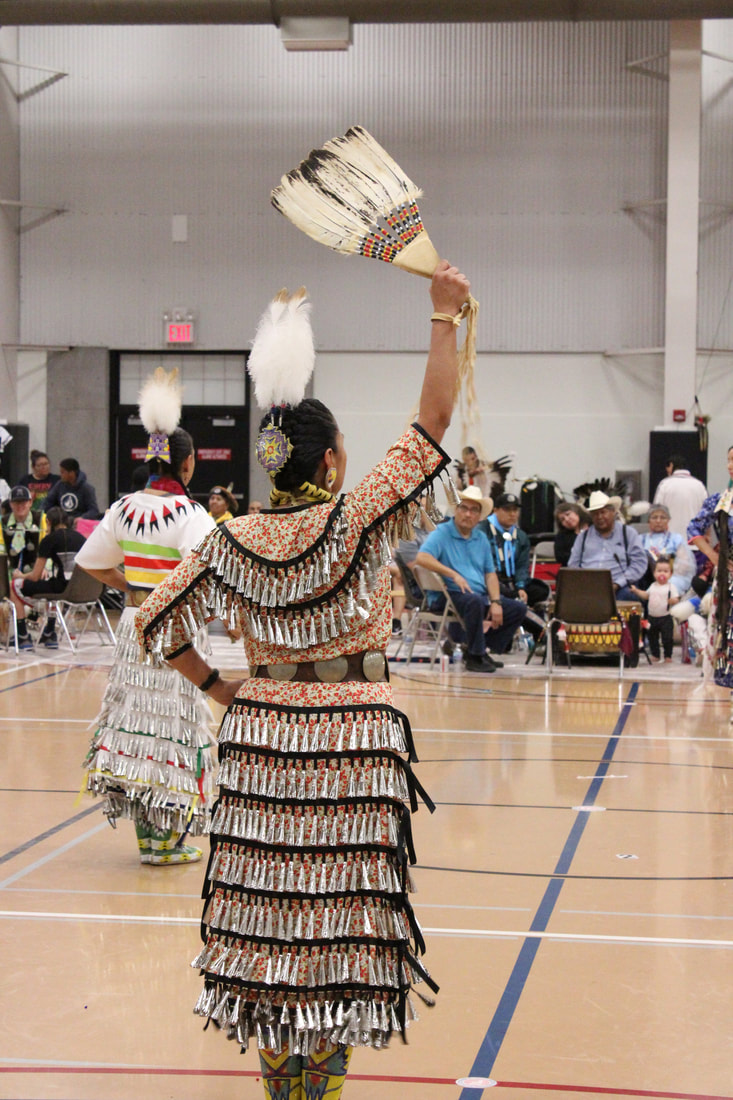
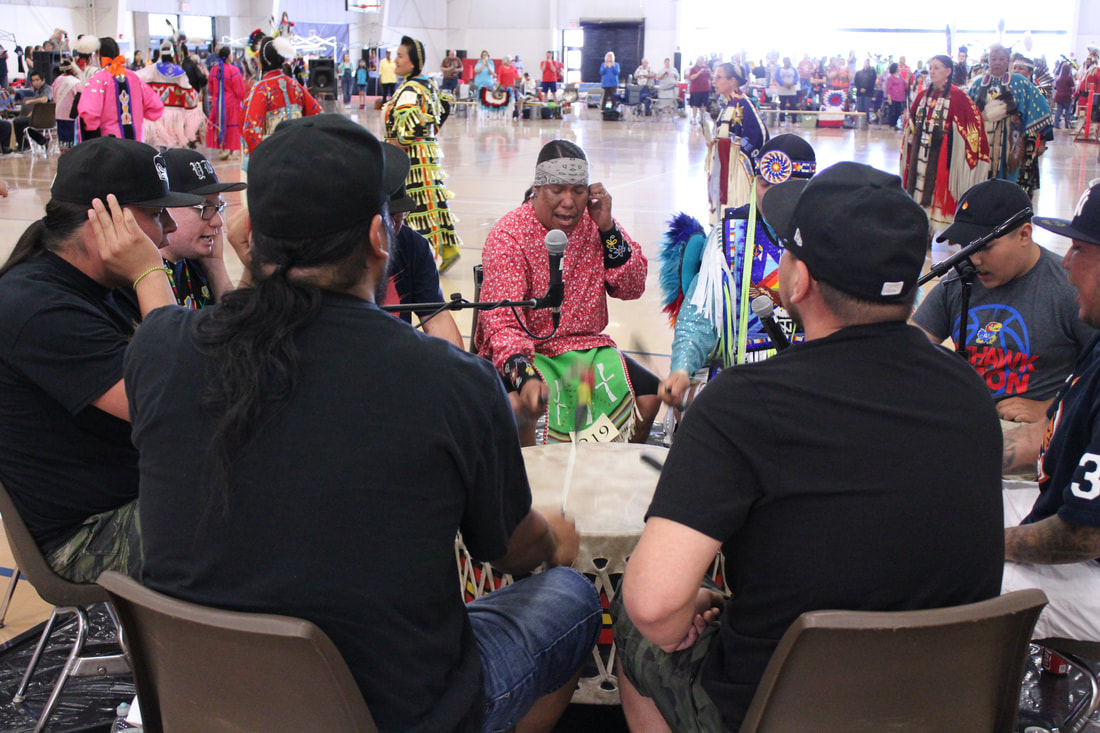
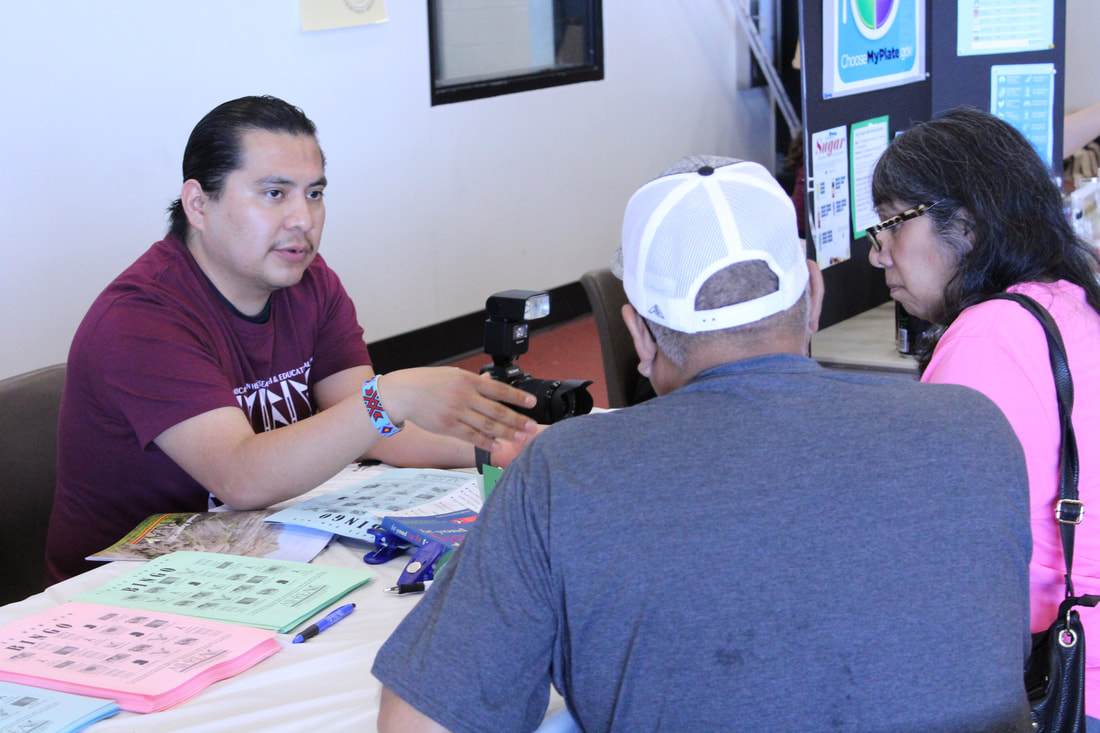
 RSS Feed
RSS Feed